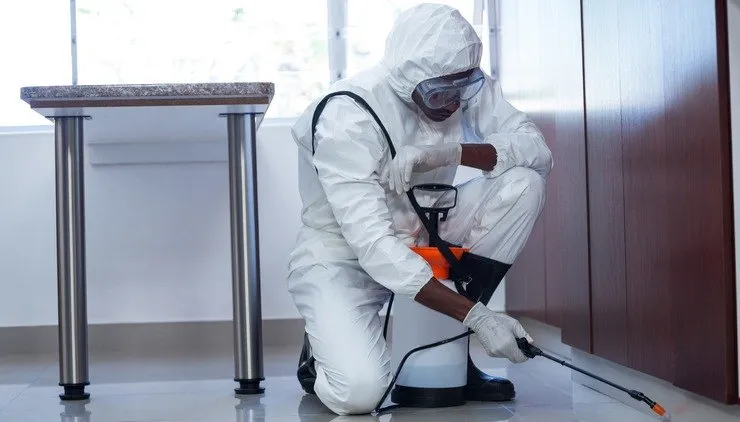Pest infestations are a persistent issue faced by homeowners, businesses, and agricultural sectors alike. Effective measures such as Fumigation Services are essential to manage and prevent the damage caused by various pests. This article explores the importance of these services, their benefits, and how they can ensure a safer and healthier environment.
The Role of Fumigation Services
Fumigation is a widely recognized method for controlling pests in enclosed spaces. It involves the use of fumigants or gaseous pesticides to eliminate pests by targeting their respiratory systems. This technique is particularly effective for large-scale infestations and provides comprehensive coverage for a variety of pests, including termites, beetles, and rodents.
Key Benefits of Fumigation
- Complete Pest Eradication: Fumigation penetrates areas that are otherwise inaccessible, ensuring no pests are left behind.
- Versatility: This method is effective for residential, commercial, and agricultural applications.
- Time Efficiency: Compared to other pest control methods, fumigation delivers results in a shorter time frame.
- Prevention of Recurrence: Proper fumigation can prevent future infestations by targeting pests in their early life stages.
When to Opt for Fumigation Services
- Severe Infestations: If pests have invaded extensively and other methods are proving ineffective.
- Storage Protection: To safeguard grains, furniture, or other stored goods from pest damage.
- Routine Maintenance: Regular fumigation in high-risk areas can help maintain pest-free environments.
Understanding Termites and Termite Treatment
Termites are among the most destructive pests, capable of causing severe structural damage if left unchecked. They primarily feed on wood and cellulose-based materials, making homes and businesses vulnerable to significant losses.
Signs of a Termite Infestation
- Mud Tubes: These are small, pencil-sized tubes termites build to travel between their nest and food source.
- Hollow Wood: Tapping on wood that sounds hollow may indicate termite activity.
- Discarded Wings: Termites shed their wings after finding a new nesting site, leaving them scattered near windows and doors.
The Importance of Termite Treatment
Termite Treatment involves various strategies aimed at eradicating termites and preventing their return. From chemical barriers to baiting systems, these methods are tailored to suit specific infestation levels and property requirements.
Effective Termite Treatment Methods
- Liquid Termiticides: These create a chemical barrier in the soil, preventing termites from entering a structure.
- Baiting Systems: Poisoned bait is used to attract and kill termite colonies over time.
- Wood Treatments: Spraying or injecting chemicals into wood to make it resistant to termites.
- Heat Treatment: Exposing affected areas to high temperatures that are lethal to termites and their eggs.
Benefits of Professional Pest Control Services
While DIY pest control methods are available, they often fall short in effectively addressing severe infestations. Engaging professional services ensures:
- Expertise: Trained technicians use advanced tools and proven techniques to deliver effective results.
- Customized Solutions: Professionals assess the specific needs of a property and recommend tailored treatment plans.
- Safety Assurance: Proper handling and application of chemicals minimize risks to occupants and the environment.
- Long-Term Protection: Comprehensive pest control measures prevent future infestations.
Preventing Pest Infestations
Taking proactive measures can help reduce the likelihood of pest problems. Here are some practical steps:
General Pest Prevention
- Maintain Cleanliness: Regular cleaning of living and storage spaces discourages pests from settling.
- Seal Entry Points: Close cracks and gaps in walls, doors, and windows to block pest entry.
- Proper Waste Disposal: Dispose of garbage promptly and securely to avoid attracting pests.
- Regular Inspections: Periodically check for signs of pest activity and address issues promptly.
Specific to Termites
- Reduce Moisture: Fix leaks and ensure proper drainage around the property.
- Protect Wood: Apply anti-termite coatings to wooden structures and furniture.
- Remove Debris: Avoid storing wood, paper, or other cellulose materials near the foundation of buildings.
Environmental Considerations
Modern pest control emphasizes eco-friendly practices to reduce environmental impact. For example:
- Non-Toxic Solutions: Using organic or low-toxicity chemicals for pest control.
- Integrated Pest Management (IPM): Combining biological, mechanical, and chemical tools to achieve effective pest control with minimal ecological harm.
- Safe Disposal: Proper handling and disposal of chemicals and materials used during treatment.
Common Myths About Pest Control
- Myth: Pests only infest dirty homes. Reality: Pests can invade any property, regardless of cleanliness, if food, water, and shelter are available.
- Myth: Termites only damage wood. Reality: Termites can also harm books, insulation, and other cellulose-based materials.
- Myth: Fumigation is harmful to humans. Reality: When conducted by professionals, fumigation is safe and follows strict guidelines to protect occupants.
Conclusion
Effective pest control measures like Fumigation Services and Termite Treatment are essential to protect properties and ensure a healthy living environment. By choosing professional services and adopting preventive strategies, individuals and businesses can safeguard their spaces against the damage and health risks posed by pests. Investing in these solutions not only prevents costly repairs but also contributes to long-term peace of mind.



